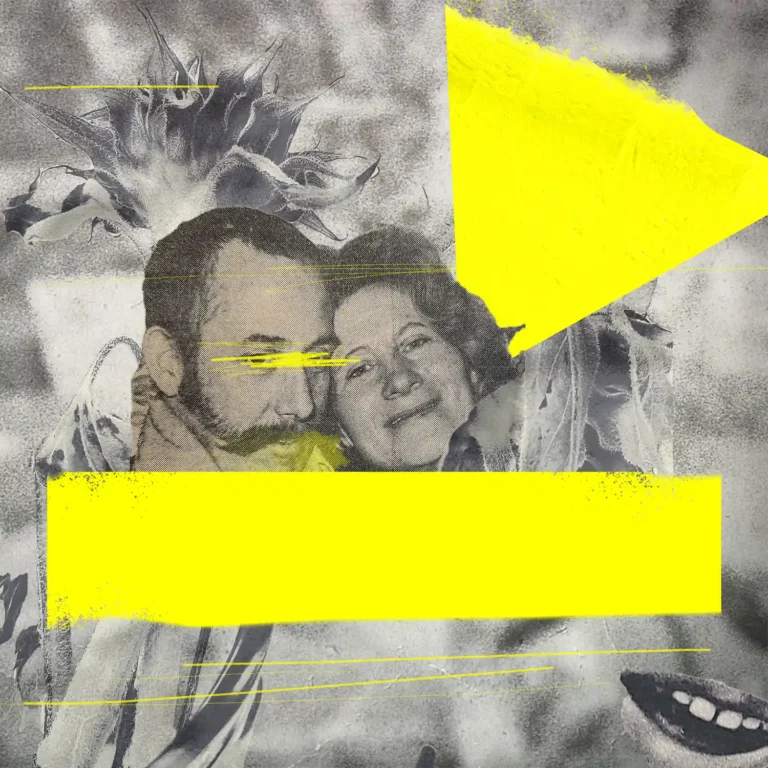We often think of what constitutes branded sound pretty narrowly. It’s a sonic logo, a mnemonic, maybe a brand voice, right?
Well… yes, whilst it is all of those things, it is so much more.
Sometimes… the audio brand is the place.
We’ll probably all have that one place, that just sounds unmistakably…that place.
Maybe it’s a local café, with the local banter and the door always left open to the busy main road.
Or a library with the subtle hum of air conditioning, creaking bookcases and soft distant coughs.
Or maybe it’s the third row back of the East Stand, in the home end of your favourite football team.
Sound shapes how we feel about a place – often more than visuals. And when it’s intentional? That’s where audio branding meets environmental storytelling.
It’s not just about recording what’s there, but designing what the environment sounds like to improve the experience for the inhabitants — whether they are human, animal, or even plants (which have been shown to grow better in the right acoustic conditions).
Unlike visuals, haptics, or even olfactory choices, how intentionally do we really curate our environments to evoke specific memories, form identity and foster belonging?
Here are 11 places where the environment has been crafted through sound in such a distinct, deliberate way that you could close your eyes and still know exactly where you are…
1. The New York Subway Startup Chime: More Than Just Safety First
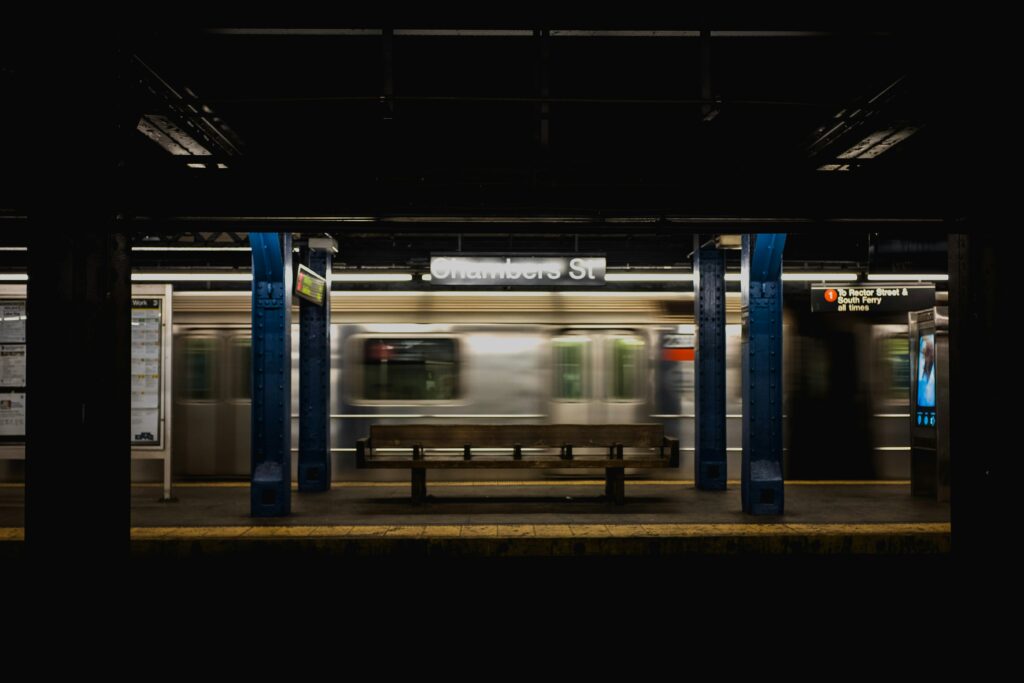
Ever waited for the New York City subway and heard that familiar startup chime? The little melody – a quick “do-mi-so-do” – that signals the doors are closing and the train’s about to move?
It’s not just a random beep. It’s a carefully crafted audio brand, loaded with meaning.
That melody is actually borrowed from West Side Story — the iconic musical set in New York. The notes evoke a sense of urgency, movement, and a touch of nostalgia for the city itself.
The genius lies in its simplicity and emotional pull. It’s a tiny soundtrack to millions of daily journeys, blending function and feeling. Beyond its practical use, it has become a cultural shorthand — something you recognise immediately as “New York.” Tourists and locals alike associate it with the city’s chaotic rhythm and energy.
That’s sonic branding at work. It transforms an everyday alert into a symbol of place and identity.
2. Signal Iduna Park (Borussia Dortmund, Germany)

The design intent for Signal Iduna Park placed sound at the heart of its goals: to create a terrifying atmosphere for opponents.
The steep rake of the famous Südtribüne — home of the Kop-esque ‘Yellow Wall’ stand — makes crowd noise feel like it is falling forward. There’s intentionally no roof gap above, which means sound pressure builds vertically, hitting the pitch hard. Such is the effectiveness of the design and fan experience that the south stand was reinforced structurally to handle the low-frequency vibrations of synchronised chants.
3. Singapore Changi Airport: Audio Branding Through Soundscapes
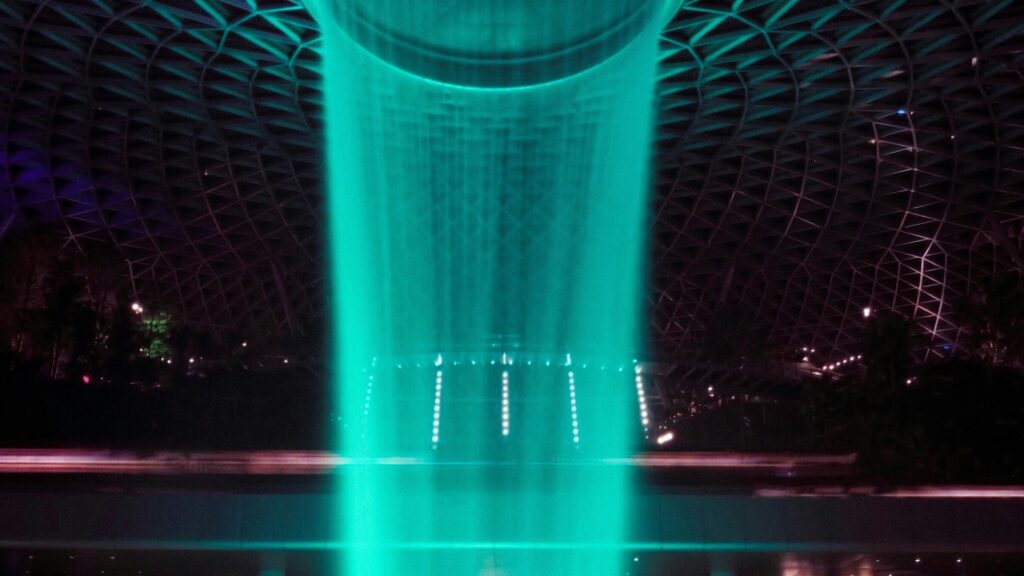
At Changi, the world’s most awarded airport, you won’t find a generic lounge playlist. Instead, bespoke soundtracks are deployed in specific terminals and gardens.
In the Rain Vortex at Jewel Changi, where a 40-metre indoor waterfall crashes into a reflecting pool, hidden directional speakers pipe in a subtle ambient score written in a pentatonic scale — harmonising with the rhythmic splash of falling water. It ebbs and flows in sync with passenger movement and lighting changes.
In the Butterfly Garden, microphones capture the flutter and movement of wings, fed through a granular processor and mixed with a gamelan-inspired ambient track. It’s airport-as-sanctuary.
Similar UX choices have been made elsewhere. Stavanger Airport in Norway uses field recordings from the Norwegian coast — slowed-down gull cries, the rustle of underwater kelp, and the hum of fishing boats blended with Nordic tonalities. Travellers are met with a sense of place the second they step off the plane. A terminal that doesn’t just look like Norway. It feels like it.
4. NEOM & The Line
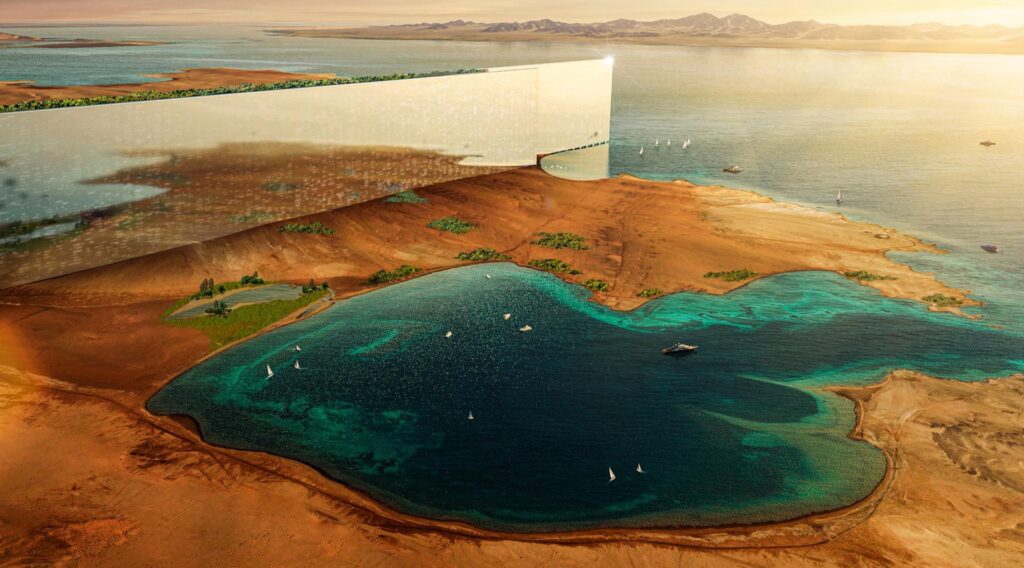
NEOM is Saudi Arabia’s $500bn mega-city, and The Line is its wildest part: 170km long, no cars, no streets, no noise.
But it’s the sound of the place that’s truly radical.
They are selling silence as a luxury. No engines. No horns. Just wind, footsteps, and the occasional curated bird. Like Tesla’s “quiet design” applied to an entire city.
So far, so utopian.
But then it gets weird. NEOM’s design documents talk about programmable soundscapes. Music and ambience that change depending on the time of day, footfall, even mood. Your city, scored like a Spotify playlist.
Which raises a big question: who controls the audio?
Because while I love the idea of adaptive environments, I can’t help but worry this will be sound-as-advertising. Or worse, sonic manipulation. We’ve already seen high-pitched anti-loitering tones used on British high streets to push teens away. You think something like The Line won’t be tempted to do the same, just more subtly?
Then there’s identity. NEOM has no past. No sonic history. Just a blank desert canvas. So how do you create a sound that feels meaningful to the inhabitants?
Their answer? A mix of biophony (animals), geophony (nature), and anthrophony (us). Parks with birdsong pumped through trees. Handrails with ASMR textures. Crossing tones with local flavour.
It’s either genius.. or dystopia.
Cities thrive on chaos. London, Istanbul, Tokyo — the noise is the energy. Strip that out, and you risk something pretty f**king sterile.
So the question is: can a city so curated still sound alive?
We’re about to find out. (read more: The NEOM Project – A Sonic Paradise or Prison?)
Your Brand. Your Voice. Your Sound
No clichés. Just original, ownable audio that delivers results.
5. The Bellagio Casino
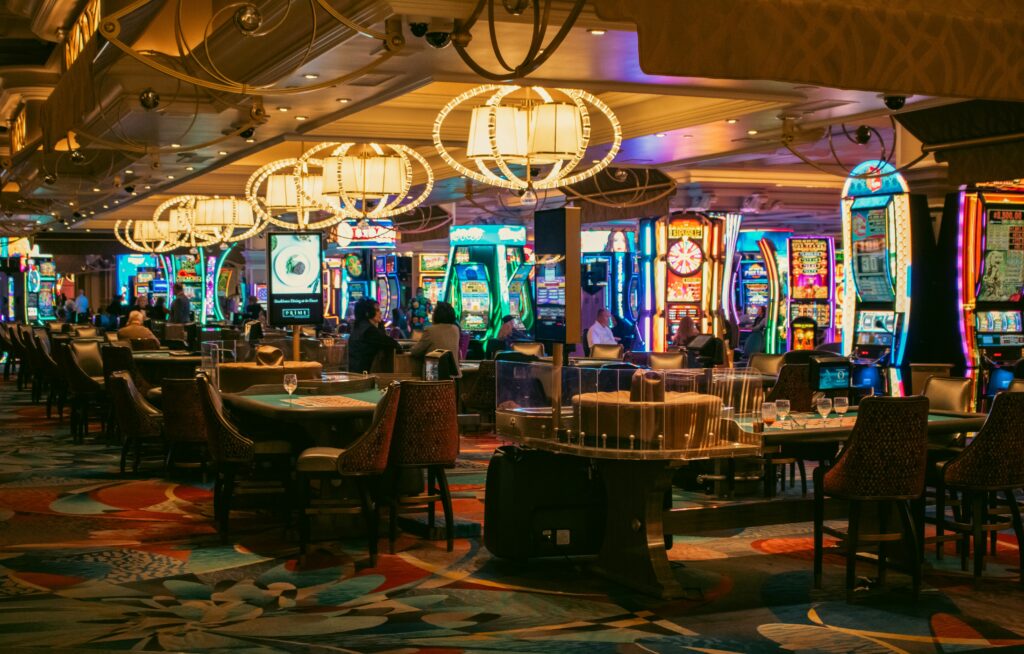
The use of music and sound has long been understood to be able to positively affect how much we spend.
Slower music increased sales at a US supermarket chain by 39.2% compared to faster music (Sonic Logos: Can Sound Influence Willingness to Pay?) and when M&S turned their background soundtrack off in 2016, it had a double-digit negative impact on sales.
But when the Bellagio casino in Las Vegas began playing relaxed background music, they famously broke gaming revenue records. It made players feel less risk-averse, place bigger bets and encouraged them to stay longer. (Why Being Relaxed Makes Us Spend Too Much Money)
This effect has been replicated online too, with digital sound cues on sites such as eBay.
Creating an environment, campaign or UX that makes the customer or user feel relaxed is a sure way to reduce inhibitions. And sound does this better than anything. It gets us feeling rather than actively thinking.
6. Berlin Philharmonie – The Designed Decay
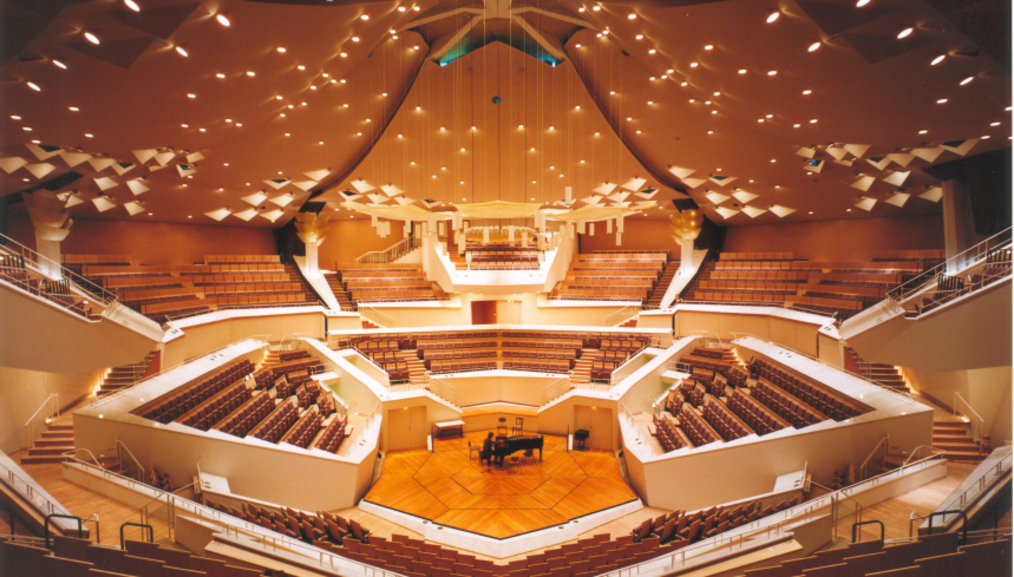
The Philharmonie’s vineyard-style seating wasn’t just aesthetic. It was acoustic. The sound diffuses evenly, allowing for a 2.2-second reverb time that doesn’t distort clarity.
Architect Hans Scharoun worked with physicist Lothar Cremer to ensure sound reached every seat with equal presence. If you sit under the canopy, you hear brightness. If you’re in the rear stalls, you get warmth.
In 2019, the hall was mapped in 3D audio to allow orchestras to rehearse remotely with simulated spatial response. The room itself is now a virtual instrument.
7. Singing Roads – Wayfinding With Sound Design – Route 66
Just outside Albuquerque on the famous Route 66, an incredible use of sound has been implemented to prevent speeding.
By cutting different-width grooves into the road surface, certain pitches can be created as the car’s tyres cross over them — but only if they drive within the allotted speed limit.
Asphaltaphones – or ‘singing roads’ as they’re known – are a powerful way in which sound is creatively delivering something that traditional visual deterrents like road signs and speed cameras were unable to enforce.
Singing roads have been deployed as far and wide as Japan, the USA and Denmark.
8. Tick-tick-tick-brrrp – The Stockholm Pedestrian Crossing Sound
If you’ve ever stood at a road crossing in Stockholm, you’ll have heard it: a high-speed mechanical ticking while you wait… followed by a distinctive “brrrp” burst when it’s time to walk.
When I visited Stockholm in 2018 I was struck by how different it sounded. It’s not like the stoic beeps of UK pelican crossings, or even the distinct two-tone “Pip-pip-po-po” melody of Tokyo’s crosswalks.
And that’s because it’s electromechanical, not digitally simulated. It comes from physical relays and speakers inside the signal post.
There’s a calmness to it – a soft-spoken Scandi exactness that reflects Swedish urban design values: functional, minimal, but emotionally legible.
But it isn’t just functional. It’s a precisely designed acoustic code that serves two purposes:
- Orientation for the visually impaired
- Environmental consistency across the city
In some intersections, there’s even a directional difference in tone depending on which street you’re crossing, helping with spatial orientation.
The “brrrp” sound is so closely associated with Stockholm that it often appears in field recordings, ambient sound art, and Swedish films as a sonic anchor to place. I found it so intriguing (I know I’m a nerd…) that I had to record it while I was there.
9. Iceland Soundscape Project
Iceland is loud. Not in the way cities are. But in its geology. You can hear the earth move. In 2017, the Icelandic Tourist Board commissioned a project to record the island’s sonic textures. Artists captured everything from glacial calving to geothermal hiss.
One highlight? The sound of ice crackling inside an ice cave, layered with a low-frequency rumble of distant volcanic activity. The recordings were used in airline ads, art installations, and even yoga sound baths.
The project helped reframe Iceland not just as a visual destination, but a listening one.
10. Tokyo’s Hassha Melodies – Music as Wayfinding
Every train station in Tokyo has a unique, 7-second departure jingle. These aren’t just ear candy — they’re emotionally engineered. Stations with more footfall use major keys and bright timbres. Smaller stations often use nostalgic melodies in minor keys.
One example: Ebisu Station’s melody is based on the theme from the Yebisu Beer ad — tying the stop to the beer brand’s historic brewery.
They aid memory too. Elderly passengers and neurodivergent commuters report associating melodies with destinations. It’s music that literally guides you.
11. The High Line, NYC – Urban Audio Theatre
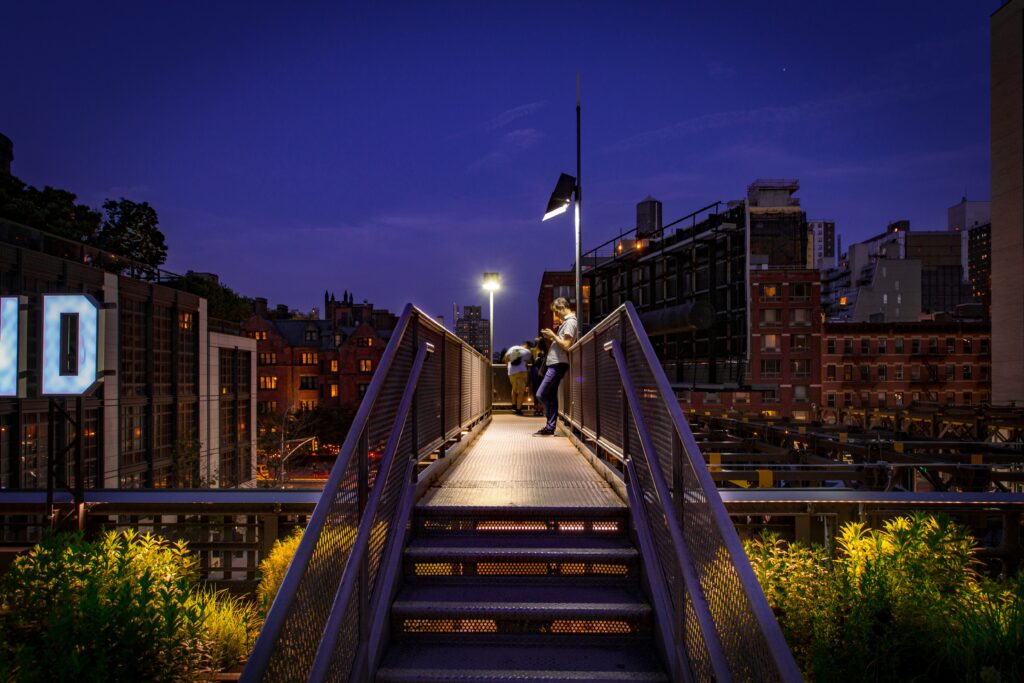
Composer and sound artist Charles Morrow created soundwalks for the High Line — immersive audio journeys blending narration, sound design, and live environmental layering.
You’d be instructed to pause near the Standard Hotel, where a binaural recording of a long-gone meatpacking warehouse plays through headphones, synced with where you’re standing. Ghost sounds.
It’s like archaeology for your ears.
Final Thought: Soundscapes That Shape Identity
These aren’t random environmental recordings. They’re intentional, crafted, embedded sonic gestures. They ground us in geography. In culture. In time.
If brand sound is a logo for the ears, then these places are the whole experience — the lobby, the architecture, the story, the feeling. Even the metaphorical f**king gift shop.
As audio branding matures, the lesson here is clear and one we’ve been advocating for some years: sound isn’t just what you add. It’s what you make part of the fabric from the start.
Ready to explore how your space could sound like nowhere else? We’ll help you design sound that is unmistakably yours.

